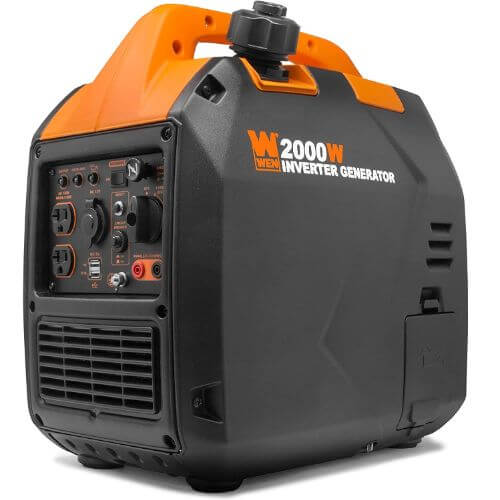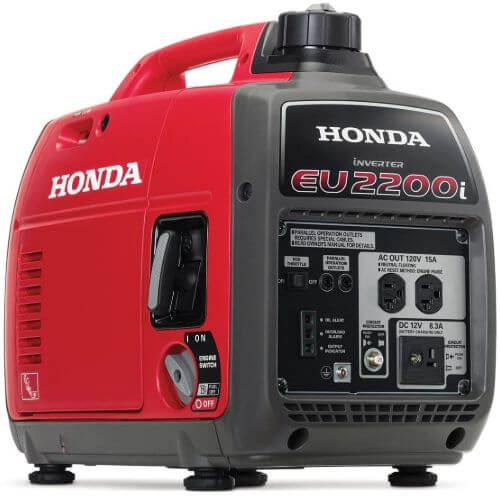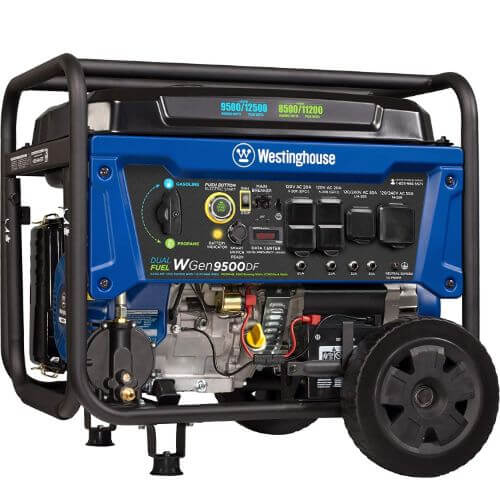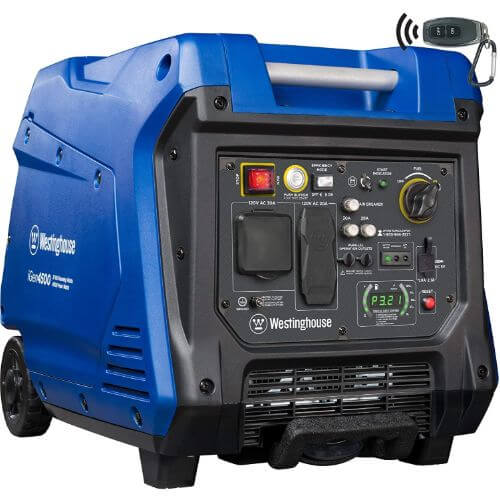Table of Contents
In the 20th year of the 21st century, the era of flying machines and walking robots is quite a usual affair to witness the unusual. However, if we miss out on the basics, we’ll be left behind, all alone in this tech-savvy world. Let’s talk about the necessities of life that have evolved over time, from washing dishes to buying a dishwasher machine, from coffee pots to espresso machines, gas stoves to electric ovens, and finally, from huge generators to a portable one.
Everything has evolved. Hence, it’s fair to say that to live is to evolve and adapt to change as fast as possible. That went too far. Coming back to the topic, portable generators aren’t new in the market; however, it’s a considerable achievement for power-stricken areas that have failed to befriend electricity.
There is absolutely nothing to be sad as the portable generators are here to the rescue- to save your day. As a matter of fact, portable generators have been in the market for quite a while now.
Best Portable Generators
Time for some technical facts; Generators varying in quality, size and price range is all you need to know if you’re interested in making an investment of the sort. Knowing the total power, you require based on the usage and number of devices, a decent option can come your way in a few moments. Without further delay, let’s dive in.
What is a portable generator?
A portable generator is either a gas or diesel-based device which provides electrical power temporarily. Portable generators are used for domestic, industrial and commercial purposes. The engine creates usable electricity of certain wattage by converting mechanical energy into electrical energy. Many construction companies use portable generators to light up remote site areas. Industries use portable generators as a form of backup electricity. As for domestic use, a portable generator can provide a house with sufficient power, based on usage.
Power usage
The first most important point that needs your proper consideration is power. How much power outcome you expect from the generator and the application you wish to use the generator for. Let’s suppose your refrigerator needs 130 W wattage. What if it needs more than that? It would be best to have a roughly estimated power depending on the appliances and devices you use at home.
Which size is suitable for you?
Portable generators vary in size. The size has a lot to offer, starting from a small generator producing from an 1800 Watt unit from a whole-house generator that is capable of producing over 20,000W power. According to size and power, price is another factor that varies along. The best portable generators which offer a considerable amount of power can be costly, while the less-powered generators can be affordable.
2000 Watt portable generators come with the best price and compact unit. Few of the 2000Watt generators are battery-powered while most are gas. This type of generator is best used as a backup, which remains restricted to a few fans, light, and other home appliances that require less power.
5000 Watt portable generators are likely to be found in on-site areas where multiple devices and tools are being used via a generator. Such generators can even run mitre saws with 15 amps of powerful motors. For a backup, it can run lights, fans, refrigerator as well as an AC unit.
7000 Watt generators do fall into the portable generators list. However, we’re talking about 200 lbs 7000 Watt generator which doesn’t feel portable at all. It can be moved with the help of wheels, but surely cannot be carried along. The extra 2000 Watt power allows you to run an entire site area. You are likely to find these with a 240V plug as their standard tool.
10,000 Watt generators, yet again, are one of the generators which fall out of the portable category with over 500 lbs. It provides sufficient power to a large residential area or site area with several power-driven equipment and tools. Such powerful generators are directly wired to the breaker. Make sure you get the wiring done from a smart technician guy. Surely, you don’t want to experience the consequences of bad wiring with such a powerful beast.
How many watts do you really need?
As explained earlier, the watt consumption is entirely upon you. Run these few points, and you will be able to decide how many watts the best portable generator will provide for you.
- Start considering device which consumes the most startup power.
- Add up the number of total devices.
- Remove the unimportant ones; devices that you don’t need.
- After removal, the devices which remain are the total power you need to be provided with.
- Always go for an extra 1000Watt to be safe.
THD and Clean Power
THD Total Harmonic Distortion, often known as the clean power is referred to as the percentage less than 6% to run your laptop or other electronic devices without any risk of damaging the built-in electrical circuits within the device. For the best portable generators, THD less than 6% is the most suitable level of voltage required. Never opt for an even low % as it’s only going to increase in price while the function remains the same.
Our Top Recommendation
Westinghouse iGen4500 Super Quiet Portable Inverter Generator 3700 Rated
- 3700 Rated Watts and 4500 Peak Watts at Less Than 3% THD – Telescoping Handle – Gas Powered – Remote Start With Included Key Fob, Electric and Recoil Start
- Features a 5–20R 120V Duplex Household Outlet, an RV-Ready Tt-30R 30 Amp Outlet and Two USB Outlets – Great Choice for Travel Trailers or Home Use – Strong Enough to Run All Your Essentials
- Led Data Center: Rotating Digital Display Shows Fuel Level, Power Output, Remaining Run Time, Voltage Output, and Lifetime Hours
- Extremely Quiet, Extremely Fuel Efficient: as Low as 52 dBA Noise Output and Up to 18 Hour Run Time on a 3. 4 Gallon Gas Tank – Features “Economy Mode” for Maximum Fuel Efficiency
Fuel type
For the best portable generators, gas is always the option due to the fact that it comes easy and inexpensive. An important tip to consider when storing fuel in the tank is always using a stabilizer to invalidate the effects of ethanol. It amps up the operation of the entire generator over time.
While gas is the most common to deal with, portable generators also come with diesel if you’re ready to invest a little more. The plus point diesel generators can provide you with is the no-more carburetor, which means it’s not going to get clogged when you least expect it to. However, diesel doesn’t come as easy as gasoline does.
Another option for an environment-friendly buddy that’s not going to contribute to the damaged ozone layer is propane-based generators. However, not an easy one to find.
Another option is to get a solar-generator, which runs silently via solar cells. The only thing that comes in your way is the expensive solar set-up and slow charging, which doesn’t allow more than 1800 units. Such generators are best kept as a backup.
Fuel Tank
Most portable generators take a little too long to refill due to larger tanks. However, most fuel tanks allow you to run the generator for 7-9 hours with a 50% load. You can make the generator run for a long period by using a low % of available power. However, larger tanks are always the preferred option. Fuel tanks are made up of two materials; plastic or gas tanks. Plastic ones are safe from corrosion.
Starting the generator
Portable generators come with either pulling the recoil cord or simply pushing the start button. The push-button comes with electric generators if you are ready to invest a little more. Most portable generators still run on lithium-ion batteries. In case of purchasing battery-powered generators, make sure you charge the batteries before using them.
Noise level
If you’re going for a silent option, smaller units can do that for you. Smaller portable generators are best known to be compact, lightweight and much quieter. If you want a small backup for an outdoor trip, go for smaller generators. However, if you want to run the entire household or a moderate-sized site area, go for units above 4000Watts, which do not fall into the “silent” category.
Electronic Fuel Injection
For the best portable generators, EFI is an impressive feature that lets you get rid of the carburetor and other frequent maintenance. EFI also makes it easy for you to start your generator in cold weather.
Wheel kit
Portable generators, which are on the heavier side, do not always come with wheel kit. You have to purchase it separately with the generator. Wheel kits are easy to install. The installation period is roughly about 5 minutes. However, make sure you choose a generator with a wheel kit rather than playing extra.
Hook bar
A portable generator with a left hook bar installed is an ideal feature to look for due to the fact that you might want to move your generator at a higher floor or level. To do so, a left hook bar saves you from an extra hassle of thinking ways to lift it.
Direct connection
Having your portable generator connected to your house via direct connection is an easy and ideal way to handle electricity cut-out. It’s always good to have a set-up that enables fast and quick emergency backup electricity without hassle and pain. The whole-house generator automatically turns on when the electricity goes out and turns off on getting the electricity back. However, one negative point of such generators is the price. An automatic kick on-off generator is a much expensive option than the ordinary portable ones.
To make your own set-up, you can have several portable generators connected to your whole-house; however, it’s not suitable for a DIYer. The wiring can only be done by a professional and qualified electrician to avoid any unpleasant situation.
Another way to utilize portable generators is to have breakers installed. Breakers help you prioritize which area you don’t want to use regardless of the connection. You can temporarily break or make the contact with different rooms or areas of the house.
Maintenance
Buying the best portable generator provides you with ample power to run larger areas; however, the entire sum can go in vain if not maintained properly.
If you ever find yourself caught up in a situation where there is no power for over a few hours, that’s when you need a portable generator or the best portable generator which best suits your requirements. However, the problem arises when you choose to keep your portable generator as an emergency backup, which means it’s likely to stay on a standby mode most of the time. Idle generators are likely to cause more problems with the maintenance level than the ones in frequent use.
In order to maintain an electric portable generator, make sure you charge the battery before using it. If your generator is in frequent use, it will maintain the battery itself. However, if the generator is a standby backup buddy, you will have to check before the season begins and then once every month.
Another point to consider is the oil change. Once the generator has completed 30 hours of usage, it requires an oil change. However, if you’re an occasional user, the oil changing drops down to once a year. Note that after the first oil change, your generator is good to go for 10 hours before the next oil check-up.
Plugs and filters do not require much maintenance other than an occasional check-up after 200 hours of usage. Even if you haven’t used your generator that many hours, consider changing plugs and filter once a year, and the oil, of course.
All the maintenance saves you a lot of time, energy and big sum, in case you’ve been avoiding the maintenance for a long time. Smaller issues, if not dealt with in time, change into larger issues that are not easy to tackle. Hence, it’s always wise to maintain oil levels, plugs, and filters every once in a while to save yourself from bigger maintenance issues, which can cost you a fortune. You would not want to learn the hard way, do you?
Safety Guide
It’s always important to follow instruction manual and safety rules before you start with technicalities assuming that you’re the know-it-all. To avoid electrocution, keep your generator on a dry surface at all times. Never touch it with wet hands. Make sure you let the engine cool down before going for a refuel. Refueling hot engine can result in catching a dangerous fire. Portable generators get heated even if properly wired, make sure you check everything before starting the generator.
Recommended Models
1. WEN 56475 4750-Watt Portable Generator with Electric Start and Wheel Kit
Durable enough for any job site and compact enough for easy transport, this CARB & EPAIII compliant 4750 Watt Generator includes two 120V receptacles (standard household 5-20R), a 30-amp 3-prong receptacle (L5-30), and a 120V RV receptacle (TT-30R).
2. A-iPower SUA2000iV 2000 Watt Portable Inverter Generator Quiet Operation, Lightweight
The A-power SUA2000iV provides clean, quiet power. It produces 2,000 watts of starting power and 1,600 watts of running power. Powered by a 79cc engine, the generator is ideal for events such as, camping, tailgating, and many other applications.
3. DuroMax XP12000EH Dual Fuel Electric Start Portable Generator, Blue and Black
The XP12000EH is Powered by a DuroMax 18HP, 457cc DuroMax OHV Engine. With 12,000 starting watts and 9,500 running watts, this unit can handle heavy loads from lights and a refrigerator to a home air conditioner and high amperage power tools.




